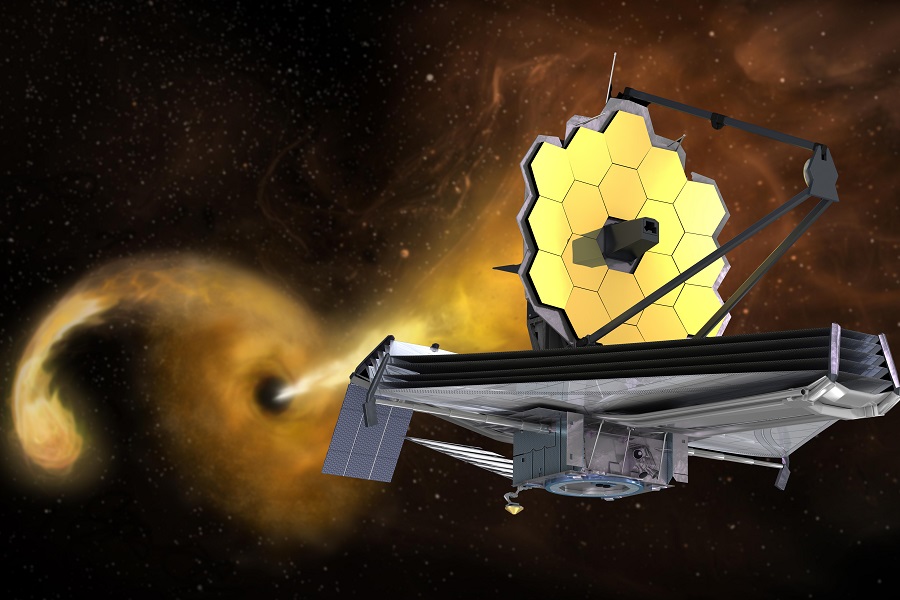Overview
The James Webb Space Telescope (JWST) has detected a previously unknown moon orbiting Uranus, provisionally designated S/2025 U1. This tiny satellite, estimated to be around 10 km (roughly 6 miles) in diameter, orbits between the inner moons Ophelia and Bianca, nestled in the planet’s ring system. With this discovery, Uranus’s known natural satellites rise to 29.
Discovery Details
- Provisional Name: S/2025 U1, pending confirmation and an official name following Uranian naming conventions.
- Size Estimate: Approximately 10 km across—placing it among the smallest known moons of Uranus.
- Location: Positioned in a challenging observational region, sandwiched between the small inner moons Ophelia and Bianca and within the glare of Uranus’s ring system.
- Orbital Characteristics: Preliminary analyses suggest a rapid orbital period of about 9 to 10 hours, comparable to other nearby inner moons.
- Observation Date and Instrument: Data were collected by JWST’s NIRCam instrument in February 2025, as part of a targeted study of the Uranian system.
Scientific Significance
- Completing the Inner System Portrait
Uranus’s inner system is a complex environment of rings, dust arcs, and shepherd moons. Discovering S/2025 U1 provides a fresh data point for models of how moons interact with ring edges and influence ring dynamics. - Advancing Beyond Voyager and Hubble
Before this, the spacecraft Voyager 2 (in 1986) and later ground- and space-based telescopes had identified multiple moons—mostly outer or irregular ones. But small inner moons, especially those embedded in glare, remained elusive. JWST’s infrared power and stable optics finally allowed for detection of such faint objects. - Insight into Collisional History
Inner moons and rings are thought to be remnants of past collisions. Each newly discovered moon refines estimates of the system’s mass distribution, the ages of debris, and potential gravitational resonances. S/2025 U1 could be a fragment from a past event or a shepherding moon affecting ring structure.
Methodology of Observation
- Infrared Advantage
In the near-infrared band, Uranus’s atmospheric and ring brightness contrasts differently with moonlets than in visible light, helping to tease out faint features. - Long-Exposure Stacking & Motion Tracking
By co-adding hours of NIRCam frames while tracking Uranus’s motion, any objects sharing Uranus’s orbital motion remain point-like in the combined images, distinguishing them from static background stars. - Precision Imaging at L2
JWST’s position in deep space—and its diffraction-limited quality—minimizes visual artifacts (“speckles”) and distortions, enabling detection of extremely faint satellites.
Next Steps in Research
- Refining the Orbit
Follow-up observations will further constrain S/2025 U1’s orbital parameters—such as its exact distance from Uranus, orbital eccentricity, and any resonances with Ophelia or Bianca. - Determining Surface Properties
Multi-filter photometry could reveal surface composition—whether the moon appears dark and dusty or bright and icy. - Official Naming Process
After orbit confirmation, the International Astronomical Union (IAU) will likely assign a name drawn from Shakespearean or Pope’s literary works, consistent with Uranian moon-naming tradition. - Modeling the Inner System
By combining the new data with existing data on other moons and rings, scientists will refine dynamical and collisional models of Uranus’s inner environment.
Comparison with the Outer Moon S/2023 U1
Previously, an outer irregular moon dubbed S/2023 U1 was discovered in 2023–24 using ground-based telescopes. Unlike S/2025 U1, it lies far from Uranus and orbits with a much longer period—on the scale of hundreds of days. The new inner moon discovery complements that earlier find and highlights the diversity of Uranus’s satellite system.
Why Uranus Is Gaining Attention
Uranus has become a hot subject again, in part due to ambitions for a future orbiter mission in the 2030s or 2040s. Discoveries like S/2025 U1 showcase the wealth of scientific insights to be gained from focused, high-resolution observation—ranging from ring dynamics and small-moon populations to seasonal and atmospheric changes. These findings will help guide and justify future mission planning.
Quick Facts Recap
| Feature | Detail |
|---|---|
| Discovery Platform | James Webb Space Telescope (NIRCam) |
| Observation Date | February 2025 |
| Provisional Designation | S/2025 U1 |
| Size | ~10 km (~6 mi) |
| Orbital Location | Between Ophelia and Bianca |
| Estimated Orbital Period | ~9–10 hours |
| Total Uranian Moons (known) | 29 |
| Status | Confirming orbit, awaiting formal naming |
Conclusion
The discovery of S/2025 U1 exemplifies the James Webb Space Telescope’s unmatched sensitivity and precision, especially in the infrared. It offers more than just one more moon to tally; each such finding enriches our understanding of a distant and dynamic planetary system. Future observations will undoubtedly continue to unveil Uranus’s hidden treasures—and perhaps inspire a new era of exploration.
